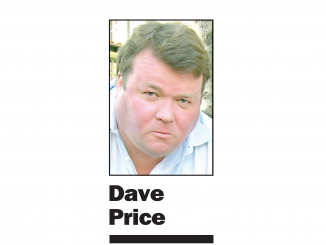
BY EMILY MIBACH
Daily Post Staff Writer
Menlo Park City Council last night (June 11) rejected a proposal to impose a moratorium on commercial development and a second moratorium on new housing projects in the city’s east side.
Instead, council will look at other ways to deal with the city’s jobs-housing imbalance, such as increasing allowed densities to get more housing downtown and re-examining a three-year-old zoning plan for the east side known as ConnectMenlo.
The moratoriums were proposed last week by Councilwomen Betsy Nash and Cecilia Taylor.
“We want to hold the city responsible for the jobs and housing imbalance,” Nash said.
One of the moratoriums would have stopped office, commercial and hotel developments. The other would have halted housing projects of 100 units or more in the east side Belle Haven neighborhood.
The proposal drew some 48 Menlo Park and East Palo Alto residents and developers to the council’s microphone last night. Most favored the commercial development moratorium.
“We have a runaway train and no one is changing the tracks,” said resident Rose Bickerstaff, urging a moratorium. “There is no more talking. We have heard everything that someone could possibly hear.”
“We must stop this merry-go-round and assess what we are doing,” said resident Matt Henry. “Belle Haven is suffering from the negative consequences of commercial development.”
Ron Krietemeyer, vice president of Tarlton Properties, which wants to develop two life-sciences offices along the Bayfront Expressway, pointed out that benefits residents want will only happen if there is development too.
“Public benefits will be tied to the projects and to that end we are concerned with this extreme measure (of a moratorium),” Krietemeyer said.
Traffic, air quality are concerns
Councilwoman Taylor, who grew up in Belle Haven, presented a list of reasons why she thought a moratorium would be the best thing for the area. Among the items on the list was the need for air quality testing. She pointed out that the neighborhood is bounded by roads that carry a lot of traffic, at least 70,000 cars a day travel on the Dumbarton and Bayfront.
“I’m concerned about breathing in my community. I am concerned that my community has been coming to council with the same issues. And if no progressive action is taken, then my community may take legal action against the rest of Menlo Park. It has absorbed the majority of development and gotten the least amount of reinvestment,” Taylor said.
Both Taylor and Nash said they wanted to be able to use the moratoriums to pause development and get information they have been seeking regarding development caps for the two large zoning plans the city approved this decade, the Downtown Specific Plan in 2012 and the ConnectMenlo plan (for the Bayfront and Belle Haven) in 2016.
Nash said that the two wanted to look at all development in the city as a whole and to not approve offices without also looking at housing.
Taylor said that when Facebook arrived in 2012, home prices went up in Belle Haven, as did rents. People were forced out of their homes and unable to pay rents of $3,000 to $6,000 a month in some of the new apartment developments, she said.
Higher density in Belle Haven than downtown
It was also brought up repeatedly last night that in Belle Haven the zoning allows more homes per acre than downtown. In Belle Haven, the most dense zoning is 100 homes per acre while downtown the maximum is 40 per acre.
Taylor said it didn’t make sense to her that the density would be higher in Belle Haven, where public transit is inadequate, but lower downtown, which is served by Caltrain.
The council did not go with a moratorium because both Mayor Ray Mueller and City Attorney Bill McClure pointed out that the moratorium didn’t mean the city could stop accepting planning applications, which could only complicate things further down the line.
The council agreed to have all new developments for the Belle Haven come to the city council for final approval (under ConnectMenlo the final approval would mostly lay at the feet of the Planning Commission) and to set up two committee of council members to look at changing zoning. The first committee will be comprised of Mueller and Taylor, who will examine zoning and changes to be made to ConnectMenlo. The other will consist of Mueller and Nash to look at zoning in the rest of the city and where land could be upzoned (more units per acre) for housing.
The council will also have to re-look at its goals it set for the year, and how that impacts next year’s budget, Mueller said.
Only a fraction of the local news stories covered by the Daily Post appear on this website. To get all the local news, including many stories you can’t find online, pick up the Post every morning at 1,000 Mid-Peninsula locations.




I watched this meeting last night and neither Betsy or Cecilia had a very good argument for the moratorium. I think people’s eyes began to roll when Cecilia started talking about air pollution — what a reach! And Betsy was talking about her efforts to get ahold of old city documents as if there was some conspiracy to keep them hidden.
I think both of them are suffering from a steep learning curve when it comes to city ordinances and this was a cry for help. The two committees they created seemed to be a good solution, where Betsy and Cecilia can learn about what is happening in private and ask Ray or the staff the basic questions they have.
There’s clearly too much development and traffic, but these two council women really don’t have any clue about how to deal with it. I felt embarrassed for them.